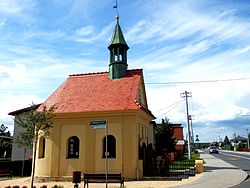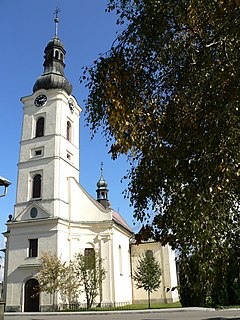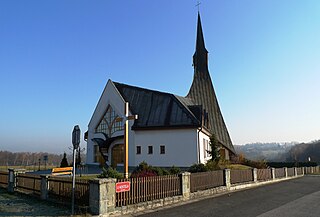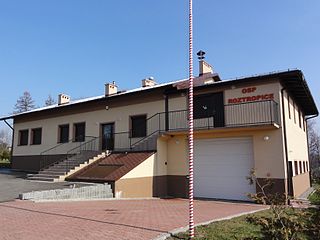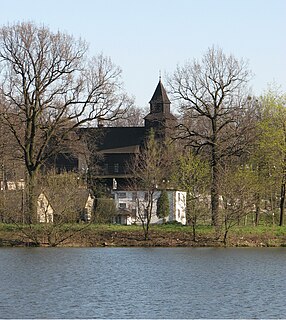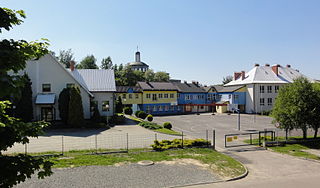| Rowień-Folwarki | |
|---|---|
| Żory District | |
Chapel in Rowień | |
 Location of Rowień-Folwarki within Żory | |
| Coordinates: 50°04′02.204″N18°39′13.338″E / 50.06727889°N 18.65370500°E Coordinates: 50°04′02.204″N18°39′13.338″E / 50.06727889°N 18.65370500°E | |
| Country | |
| Voivodeship | Silesian |
| County/City | Żory |
| Area | |
| • Total | 6.1884 km2 (2.3894 sq mi) |
| Population (2013) | |
| • Total | 1,927 |
| • Density | 310/km2 (810/sq mi) |
| Time zone | CET (UTC+1) |
| • Summer (DST) | CEST (UTC+2) |
| Area code(s) | (+48) 032 |
| Website | www.rowien-folwarki.zory.pl |
Rowień-Folwarki (German: Rowin) is a district in the north-west of Żory, Silesian Voivodeship, southern Poland. It has an area of 6.1884 km2 and in January, 2013 had 1,927 inhabitants. [1]

Not to be confused with the similarly-named town Żary in Lubusz Voivodeship

Silesian Voivodeship, or Silesia Province, German: Woiwodschaft Schlesien, Czech: Slezské vojvodství) is a voivodeship, or province, in southern Poland, centered on the historic region known as Upper Silesia, with Katowice serving as its capital.

Poland, officially the Republic of Poland, is a country located in Central Europe. It is divided into 16 administrative subdivisions, covering an area of 312,696 square kilometres (120,733 sq mi), and has a largely temperate seasonal climate. With a population of approximately 38.5 million people, Poland is the sixth most populous member state of the European Union. Poland's capital and largest metropolis is Warsaw. Other major cities include Kraków, Łódź, Wrocław, Poznań, Gdańsk, and Szczecin.
It encompasses two former settlements:

German is a West Germanic language that is mainly spoken in Central Europe. It is the most widely spoken and official or co-official language in Germany, Austria, Switzerland, South Tyrol (Italy), the German-speaking Community of Belgium, and Liechtenstein. It is also one of the three official languages of Luxembourg and a co-official language in the Opole Voivodeship in Poland. The languages which are most similar to German are the other members of the West Germanic language branch: Afrikaans, Dutch, English, the Frisian languages, Low German/Low Saxon, Luxembourgish, and Yiddish. There are also strong similarities in vocabulary with Danish, Norwegian and Swedish, although those belong to the North Germanic group. German is the second most widely spoken Germanic language, after English.
Folwark is a Polish word for a primarily serfdom-based farm and agricultural enterprise, often very large.
